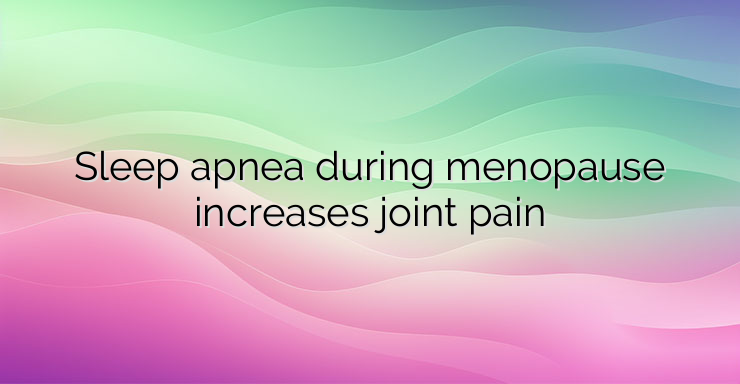The drop in estrogen caused by the transition to menopause is linked to several health problems in women. The most well-known symptoms are hot flashes, vaginal dryness, weight gain, increased risk of osteoporosis and cardiovascular disease. But there are other symptoms that are less known and go more unnoticed, such as sleep apnea, a condition that can have significant consequences for women’s health, and even more so at this time of life when cardiovascular risk is already increasing. Sleep Apnea and Menopause The incidence of sleep apnea increases as women go through menopause, with the prevalence being 4.5 times higher in postmenopausal women than in premenopausal women. In sleep apnea, breathing stops during sleep. It is associated with loud snoring that is usually intermittent. Sleep becomes restless and during the day women suffer more from drowsiness, fatigue, headaches and mood swings. Besides daytime fatigue, sleep apnea also causes changes in blood pressure, which can have fatal health consequences. Sleep apnea and hot flashes Sleep apnea is a breathing disorder that is associated with a significant increase in heart disease, hypertension, stroke, depression, and premature death. The problem is that the symptoms – snoring and stopping breathing are not so alarming, which is why the disease remains more unnoticed and less diagnosed. Previous studies have suggested that a warning sign of sleep apnea in menopausal women is hot flashes. The more intense the hot flashes, the higher the incidence of sleep apnea. Overweight women are also at increased risk because fatty tissue obstructs airways. Sleep apnea and joint pain A study has shown that there is a clear connection between sleep apnea and joint pain, typical symptoms of this stage of women’s lives. The researchers found that the greater the respiratory distress, the greater the intensity of the joint pain. This is due to the decrease in estrogen levels. Joint tissues have estrogen receptors, and estrogen plays a role in maintaining joint tissues such as cartilage, ligaments, and muscles. This is why women are more likely to experience joint pain after menopause. Studies in laboratory conditions show the beneficial effect of estrogen. The increased incidence of obstructive sleep apnea in menopause is not just related to weight gain. A decrease in estradiol levels would negatively affect upper airway patency in women, favoring the onset of sleep apnea. Why is it important to diagnose apnea? The researchers recommend that all women who have gone through menopause and have joint pain have a detailed breathing test to rule in or rule out sleep apnea as a possible diagnosis. Apnea in women does not cause such obvious symptoms,except for the loud snoring. Other symptoms such as insomnia, fatigue, and morning headaches can also be due to sleep apnea. Obstructive sleep apnea is currently detected by respiratory polygraphy or in-hospital polysomnography, but in the not-too-distant future it may be detected by a simple blood test. References: https://www.sabervivirtv.com/medicina-general/mujeres-apnea-sueno-dolor-articular-menopausia_6905 https://pubmed.ncbi.nlm.nih.gov/35231006/


Leave a Reply